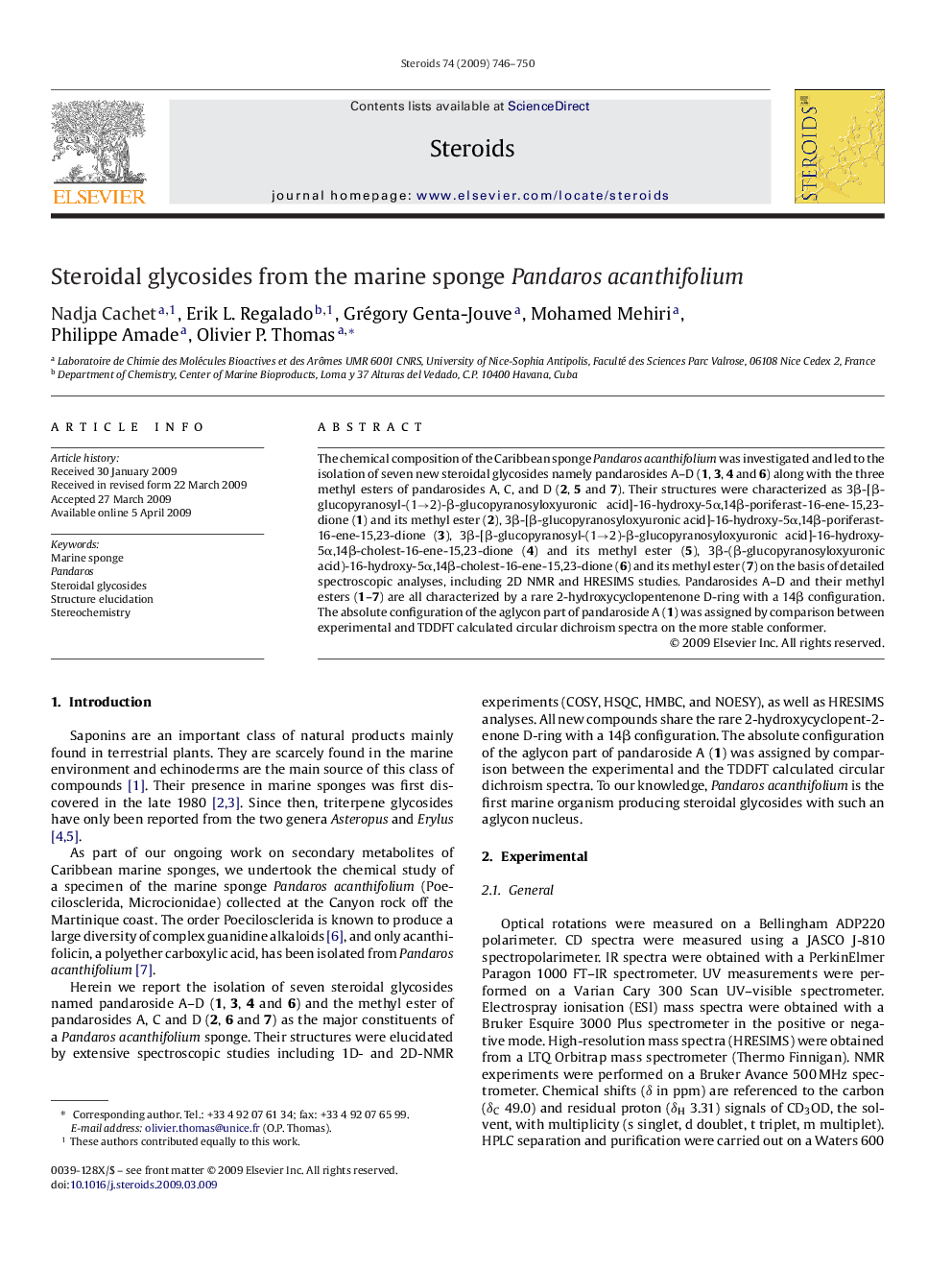| Article ID | Journal | Published Year | Pages | File Type |
|---|---|---|---|---|
| 2029392 | Steroids | 2009 | 5 Pages |
The chemical composition of the Caribbean sponge Pandaros acanthifolium was investigated and led to the isolation of seven new steroidal glycosides namely pandarosides A–D (1, 3, 4 and 6) along with the three methyl esters of pandarosides A, C, and D (2, 5 and 7). Their structures were characterized as 3β-[β-glucopyranosyl-(1→2)-β-glucopyranosyloxyuronic acid]-16-hydroxy-5α,14β-poriferast-16-ene-15,23-dione (1) and its methyl ester (2), 3β-[β-glucopyranosyloxyuronic acid]-16-hydroxy-5α,14β-poriferast-16-ene-15,23-dione (3), 3β-[β-glucopyranosyl-(1→2)-β-glucopyranosyloxyuronic acid]-16-hydroxy-5α,14β-cholest-16-ene-15,23-dione (4) and its methyl ester (5), 3β-(β-glucopyranosyloxyuronic acid)-16-hydroxy-5α,14β-cholest-16-ene-15,23-dione (6) and its methyl ester (7) on the basis of detailed spectroscopic analyses, including 2D NMR and HRESIMS studies. Pandarosides A–D and their methyl esters (1–7) are all characterized by a rare 2-hydroxycyclopentenone D-ring with a 14β configuration. The absolute configuration of the aglycon part of pandaroside A (1) was assigned by comparison between experimental and TDDFT calculated circular dichroism spectra on the more stable conformer.
